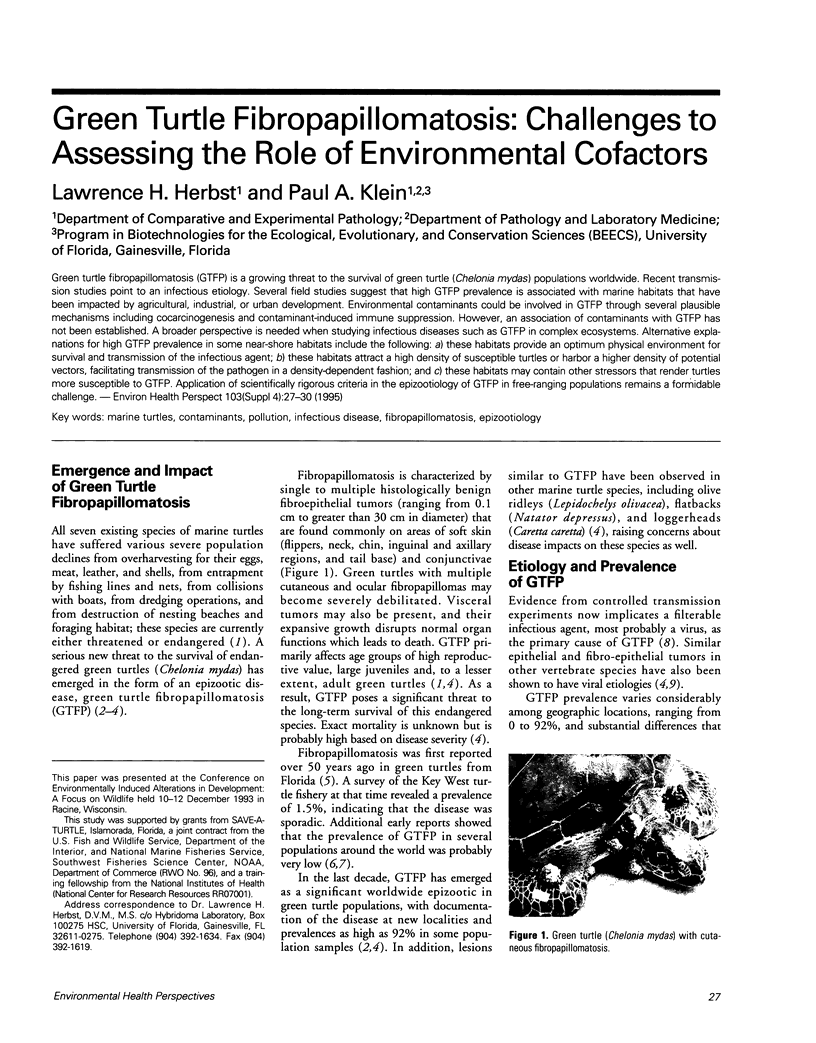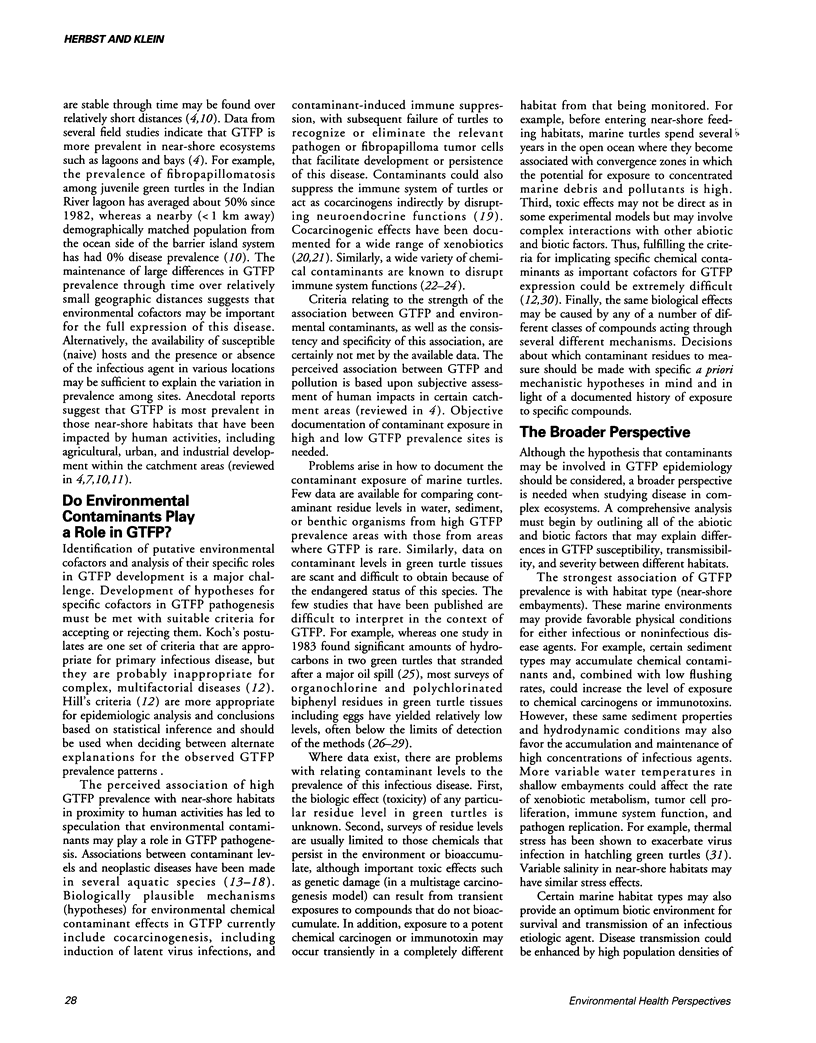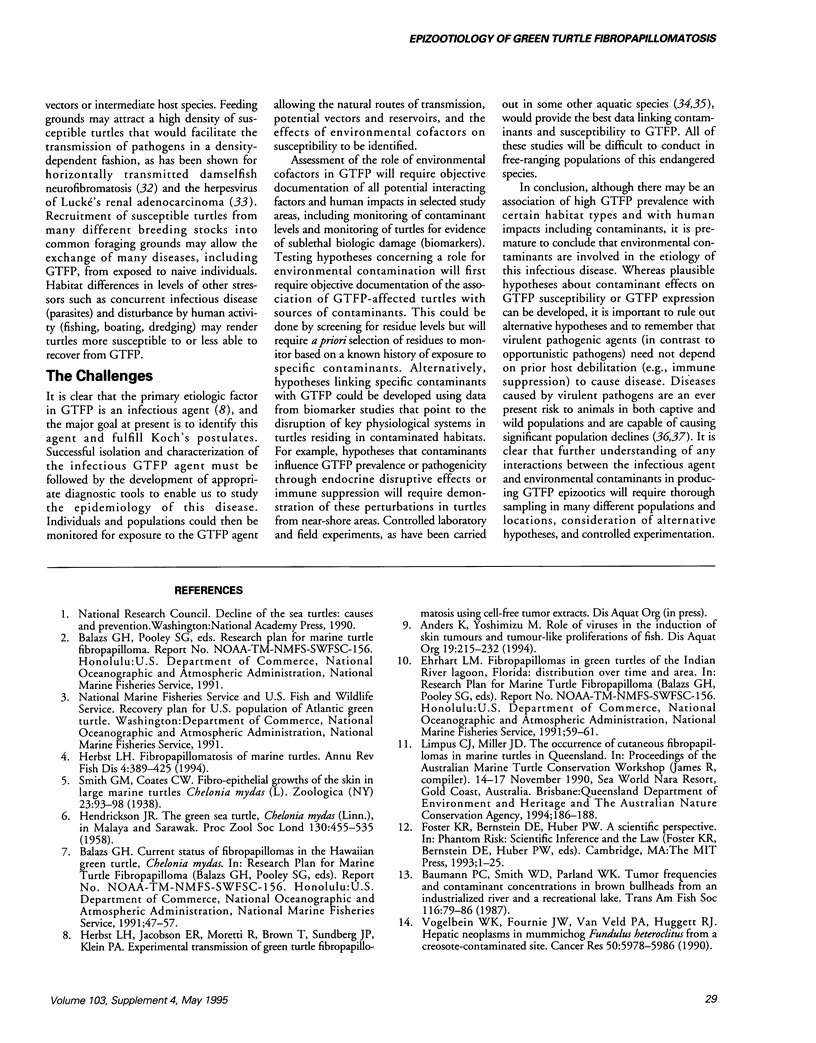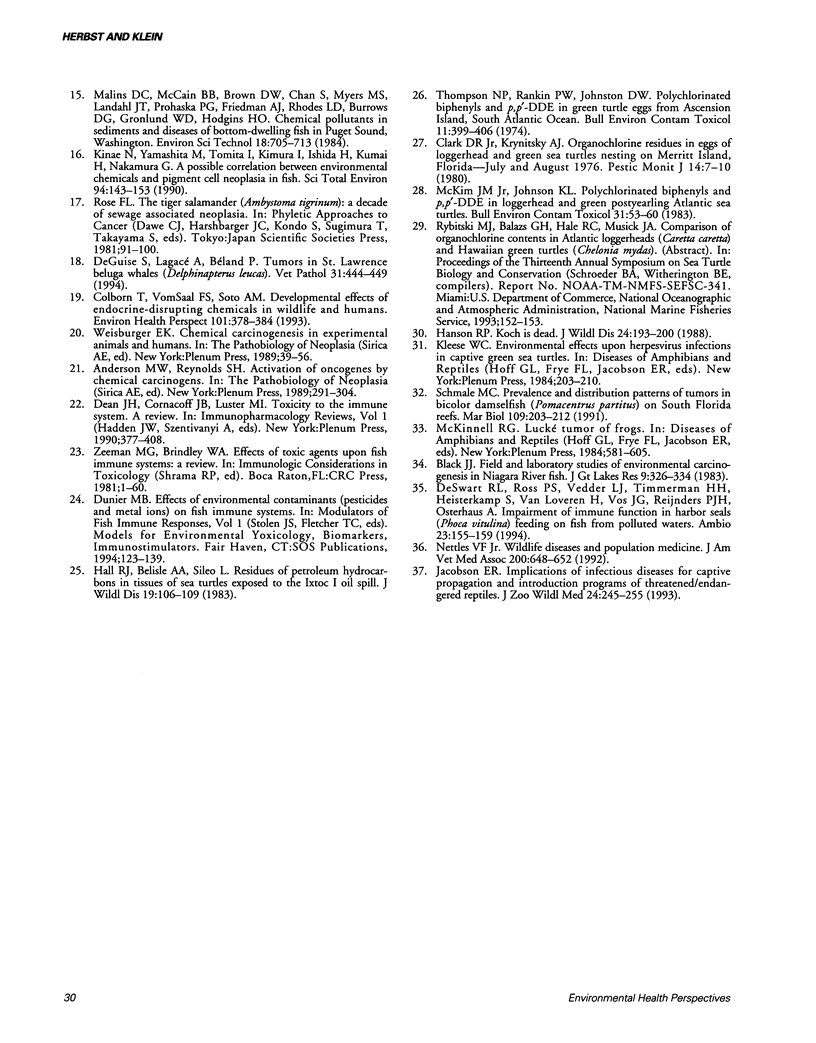Abstract
Green turtle fibropapillomatosis (GTFP) is a growing threat to the survival of green turtle (Chelonia mydas) populations worldwide. Recent transmission studies point to an infectious etiology. Several field studies suggest that high GTFP prevalence is associated with marine habitats that have been impacted by agricultural, industrial, or urban development. Environmental contaminants could be involved in GTFP through several plausible mechanisms including cocarcinogenesis and contaminant-induced immune suppression. However, an association of contaminants with GTFP has not been established. A broader perspective is needed when studying infectious diseases such as GTFP in complex ecosystems. Alternative explanations for high GTFP prevalence in some near-shore habitats include the following: a) these habitats provide an optimum physical environment for survival and transmission of the infectious agent; b) these habitats attract a high density of susceptible turtles or harbor a higher density of potential vectors, facilitating transmission of the pathogen in a density-dependent fashion; and c) these habitats may contain other stressors that render turtles more susceptible to GTFP. Application of scientifically rigorous criteria in the epizootiology of GTFP in free-ranging populations remains a formidable challenge.
Full text
PDF



Images in this article
Selected References
These references are in PubMed. This may not be the complete list of references from this article.
- Clark D. R., Jr, Krynitsky A. J. Organochlorine residues in eggs of loggerhead and green sea turtles nesting at Merritt Island, Florida--July and August 1976. Pestic Monit J. 1980 Jun;14(1):7–10. [PubMed] [Google Scholar]
- Colborn T., vom Saal F. S., Soto A. M. Developmental effects of endocrine-disrupting chemicals in wildlife and humans. Environ Health Perspect. 1993 Oct;101(5):378–384. doi: 10.1289/ehp.93101378. [DOI] [PMC free article] [PubMed] [Google Scholar]
- Hall R. J., Belisle A. A., Sileo L. Residues of petroleum hydrocarbons in tissues of sea turtles exposed to the Ixtoc I oil spill. J Wildl Dis. 1983 Apr;19(2):106–109. doi: 10.7589/0090-3558-19.2.106. [DOI] [PubMed] [Google Scholar]
- Hanson R. P. Koch is dead. J Wildl Dis. 1988 Apr;24(2):193–200. doi: 10.7589/0090-3558-24.2.193. [DOI] [PubMed] [Google Scholar]
- Kinae N., Yamashita M., Tomita I., Kimura I., Ishida H., Kumai H., Nakamura G. A possible correlation between environmental chemicals and pigment cell neoplasia in fish. Sci Total Environ. 1990 May 1;94(1-2):143–153. doi: 10.1016/0048-9697(90)90369-6. [DOI] [PubMed] [Google Scholar]
- McKim J. M., Jr, Johnson K. L. Polychlorinated biphenyls and p,p'-DDE in Loggerhead and Green postyearling Atlantic sea turtles. Bull Environ Contam Toxicol. 1983 Jul;31(1):53–60. doi: 10.1007/BF01608766. [DOI] [PubMed] [Google Scholar]
- Nettles V. F., Jr Wildlife diseases and population medicine. J Am Vet Med Assoc. 1992 Mar 1;200(5):648–652. [PubMed] [Google Scholar]
- Thompson N. P., Rankin P. W., Johnston D. W. Polychlorinated biphenyls and p,p' DDE in green turtle eggs from Ascension Island, South Atlantic Ocean. Bull Environ Contam Toxicol. 1974 May;11(5):399–406. doi: 10.1007/BF01685294. [DOI] [PubMed] [Google Scholar]
- Vogelbein W. K., Fournie J. W., Van Veld P. A., Huggett R. J. Hepatic neoplasms in the mummichog Fundulus heteroclitus from a creosote-contaminated site. Cancer Res. 1990 Sep 15;50(18):5978–5986. [PubMed] [Google Scholar]



